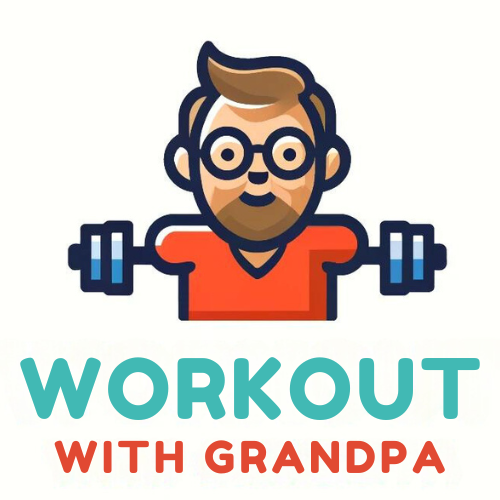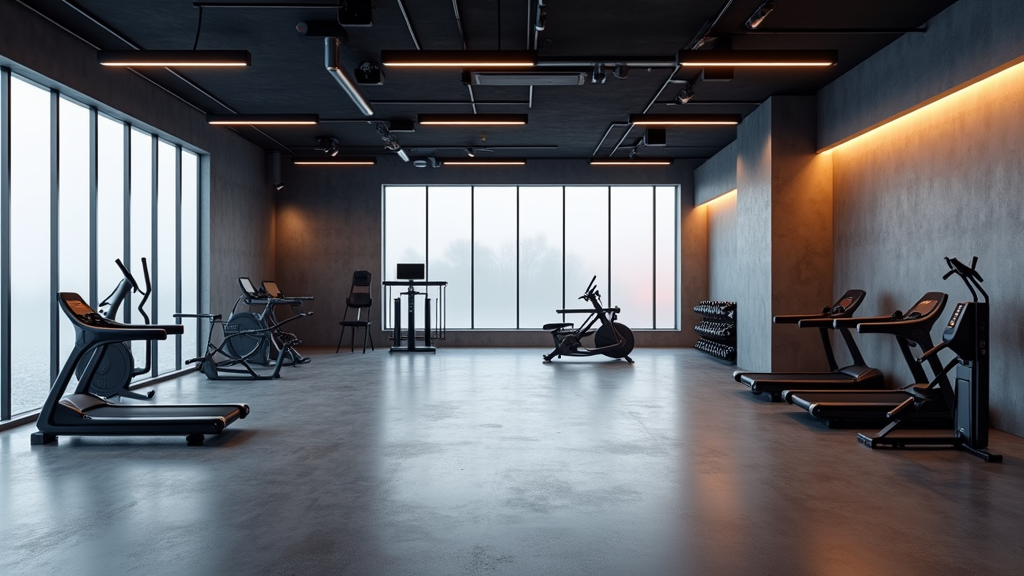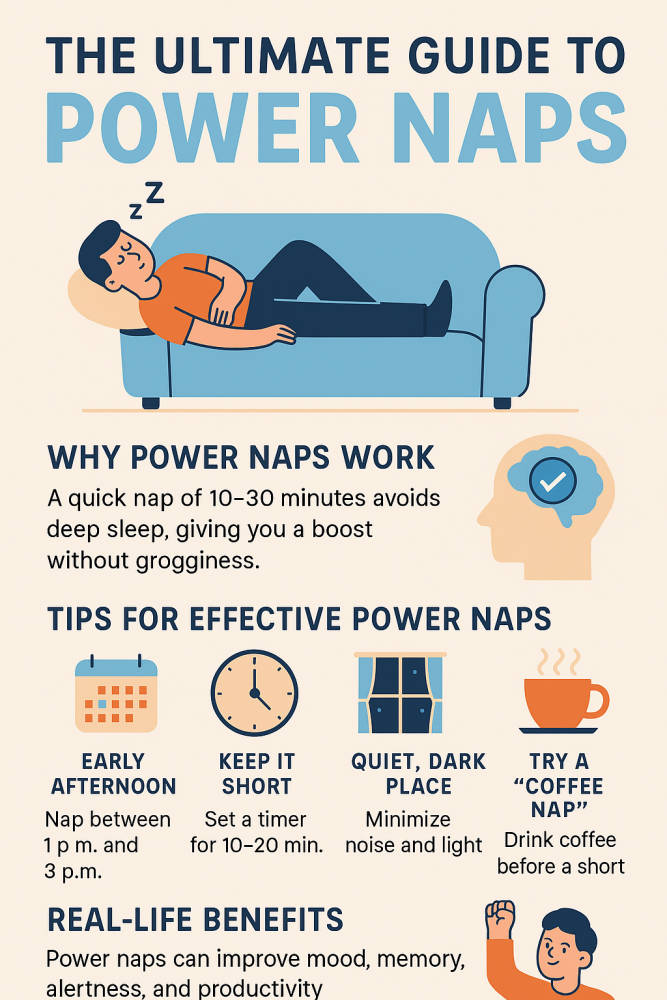Power naps often get a reputation as a quick fix when you’re dragging halfway through the day, but there’s quite a bit more to them than just closing your eyes for a few minutes. A well-timed power nap can give a huge boost to your mood, memory, and productivity. If you’re like me and get a mid-afternoon energy dip, knowing how to nap the right way comes in pretty handy. Here’s my go-to guide on making the most out of power naps for an energized recovery.

What Makes Power Naps So Effective?
Power naps stand out because of the way they fit perfectly into the body’s natural sleep cycle. In the first 10 to 30 minutes of rest, your brain starts to slow down without dropping into a deep sleep. This lighter stage helps you wake up refreshed without feeling groggy. Science backs this up; studies from Sleep Foundation and others show that a short nap helps your memory, increases alertness, and cuts down on stress. Napping isn’t about being lazy. It’s actually a super efficient way to recharge.
People have different reasons for napping, but the benefits tend to show up pretty consistently. Some people find that a short power nap helps them finish the workday strong. Others slip in a nap to keep focused while studying or on long drives. Even big business leaders and athletes use quick naps to get sharper for the rest of their day.
Understanding the Science: How Power Naps Affect You
Power naps work by letting you hit just the first stage or two of your body’s sleep cycle. The sweet spot is right before you drop into deep sleep. At that point, your muscles relax, heart rate slows down, and your brain starts to process information. This process is great for creativity and keeping your energy up without the “nap hangover” you get from sleeping too long.
Longer naps will send you deeper, and that’s when waking up can leave you feeling even groggier than before the nap. That grogginess is called sleep inertia; it’s a sign you hit deeper levels of sleep that are tougher to bounce back from quickly. Sticking to a quickie nap is the best way I’ve found to wake up feeling actually awake.
Fun fact: Countries with nap cultures, like Spain’s siesta, tend to support the idea that a brief afternoon pause actually boosts mental sharpness and health over time. In Japan, the “inemuri” practice allows short naps at work, reinforcing the mental and physical benefits of strategic daytime rest for productivity and wellness. Even in the United States, some high-performance workplaces experiment with nap pods to keep teams fresh and focused.
How to Nap Like a Pro: Key Tips for Effective Power Naps
Getting a great power nap is pretty straightforward, but a few small tweaks can really make it work even better. Here are some practical tips I use to get the most out of a quick rest:
- Pick the Right Time: Early afternoon, somewhere between 1 p.m. and 3 p.m., is when most people’s energy drops naturally. Later naps can mess with nighttime sleep, so it’s best to keep them in that window.
- Set a Timer: Keeping the nap to around 10 to 20 minutes makes a big difference. Anything longer can make you feel groggy, especially if you don’t have time to recover after waking up.
- Find a Quiet Spot: The less noise and light, the easier it is to fall asleep quickly and wake up refreshed. Earplugs or a sleep mask come in handy if you’re not at home.
- Get Comfortable but Not Too Cozy: Lounging on a couch or reclined in a chair works well for me. Lying down in bed makes it harder to avoid sleeping too long.
- Turn Off Distractions: Silence your phone or put it on “Do Not Disturb.” One text or call can totally break the nap routine.
- Try the “Coffee Nap”: If you drink caffeine, having a small coffee right before the nap can be a neat hack. Caffeine tends to kick in after about 20 minutes, lining up with your wake-up and doubling the alertness effect.
It might take a few tries to see what works best for you. Once you get the routine dialed in, you’ll probably notice your energy and mood pick up fast. Consistency is key here—your body learns to squeeze the most rejuvenation out of these brief breaks when you repeat the same routine daily.
Troubleshooting: Common Power Nap Roadblocks
Even with all the right intentions and hacks, sometimes napping just doesn’t work out. There are a few common things that tend to mess up a good power nap, but there are also some simple fixes that help:
- Can’t Fall Asleep: If your brain is buzzing or you’re stressed, falling asleep quickly can be tough. Slow, deep breathing and focusing on relaxing each body part can help you unwind fast. Listening to nature sounds or gentle music can further lower mental static so you can drift off quicker.
- Noise or Light Issues: If you’re in an office or somewhere loud, earplugs and eye masks genuinely help. White noise apps block out a lot of random noise. If at home, blackout curtains can make your nap spot feel truly restful.
- Worried About Oversleeping: A reliable timer or alarm is clutch here. Give yourself a little buffer (like a few minutes) so you can wake up slowly.
- Too Late in the Day: Afternoon naps after 4 p.m. might keep you up at night. Earlier is always better if you have a choice. When nap timing isn’t ideal, try a brief mindfulness exercise instead, which can give a similar boost without disrupting your night sleep.
If you find you’re still feeling tired after naps, it might be a good idea to look at your overall sleep quality at night or check in with a healthcare professional for advice.
Managing Grogginess (Sleep Inertia)
Waking up groggy is the biggest complaint about naps, and it’s almost always due to the nap running long. Keeping things under 30 minutes helps, but splashing your face with cold water, standing up and moving around, or grabbing a glass of cold water can help snap you out of it quicker. Bright light exposure or a quick stretch can also sharpen you up after your nap.
Fitting Power Naps Into a Busy Day
One of the hardest things is actually making space for a nap when your to-do list is slammed. I’ve found it works best to use a lunch break or block it off on your calendar like you would for a meeting. If you work from home or work somewhere that supports mental health breaks, setting up a routine makes napping feel less weird and a lot more sustainable. Even if you can only squeeze in 10 minutes of quiet downtime, taking that break can help you reset and return to your next task refreshed.
Who Benefits Most: Everyday Scenarios for Power Naps
- Shift Workers: If your job runs overnight or on rotating shifts, short naps can stop fatigue from piling up and help with focus.
- Students: Study marathons can make your brain foggy. A nap after hitting the books (but before a big test) helps with memory.
- Parents: With unpredictable sleep and long days, a quick nap can offer much-needed relief.
- Drivers: Anyone headed on a long drive can use a nap to stay sharp and safe.
- Professionals: Those in high-pressure roles or working long hours may find a quick recharge gives a new spark of creativity and decision-making clarity.
The trick is not to rely on naps to fix totally broken sleep at night, but to use them like a quick top-up for energy and focus when you need a boost. Used wisely, power naps can give an edge to all kinds of people needing an extra push during their busiest days.
Frequently Asked Questions About Power Naps
How long should a power nap be?
A power nap is usually 10 to 20 minutes. That’s enough to rest your mind without slipping into deeper, slow-wave sleep. Keeping it short helps you wake up refreshed.
Can naps replace nighttime sleep?
Power naps help you catch up a bit or sharpen up during the day, but they aren’t a full substitute for a proper night’s sleep. Regular, consistent night sleep is still super important for your health.
What if I can never nap?
Some people just don’t fall asleep easily during the day, and that’s fine. Relaxing with eyes closed for a few minutes quietly still provides some brain relief. No need to stress—just resting helps.
Are there risks to napping?
Short naps are safe for most people. Longer naps late in the day or very frequent naps could signal a bigger sleep issue, so it’s a good idea to talk to a doctor if you feel extremely tired all the time or need hours of daytime sleep to function.
Real-life Benefits: My Experience with Power Naps
In my own routine, I try to fit in a 15-minute nap after lunch if my schedule allows it. I close my laptop, find a comfy chair, put my phone on silent, and set a timer. Most of the time I wake up before the timer (especially as I got used to it), and I get a big drop in stress. My afternoon brain fog is lighter, and I’m less likely to reach for another cup of coffee later.
Plenty of friends have told me similar stories. They sometimes need a week or two to build up the habit, but most found their memory got sharper, and work tasks felt less like a slog. It’s a simple strategy for recharging, but it works better than pushing through when tired. A handful of my coworkers even started friendly competitions to see who could feel better after adopting power napping—a fun way to keep the habit alive.
Some experts suggest journaling how you feel before and after naps to spot patterns. Over time, you’ll get a sense of whether it’s best to nap mid-morning, just after lunch, or even right before a challenging afternoon project.
Wrapping Up
Getting the hang of power naps takes a bit of planning and practice, but the payoff is worth it. When you work with your natural rhythms and keep naps short, you’ll find that your focus, mood, and energy all get a solid upgrade. Power naps are a zero-cost way to boost your day, and with a few tweaks, almost anyone can slot them into their routine for a better, more energized life. So why not give power naps a spot in your daily toolkit? It could be the small change that turns around how you feel and perform every single afternoon.







Leave a Reply